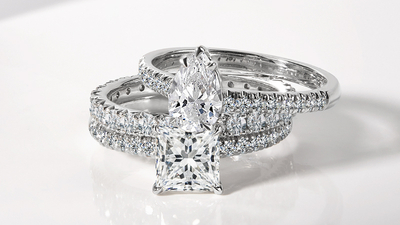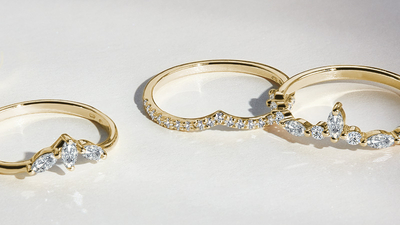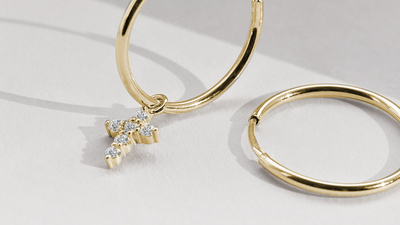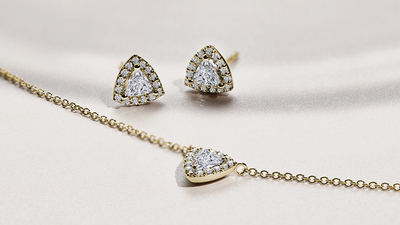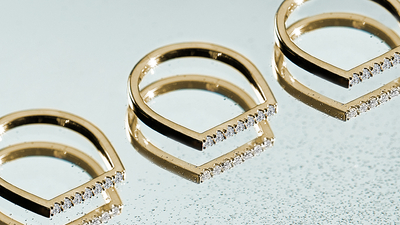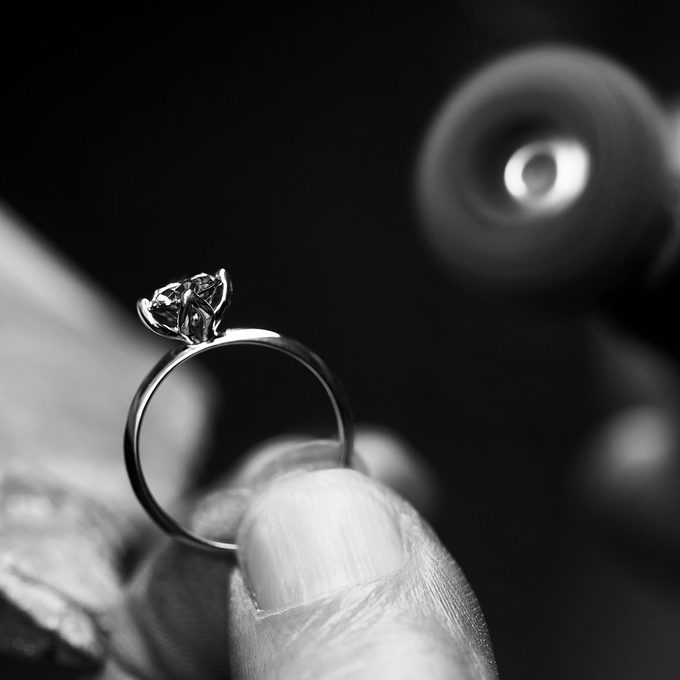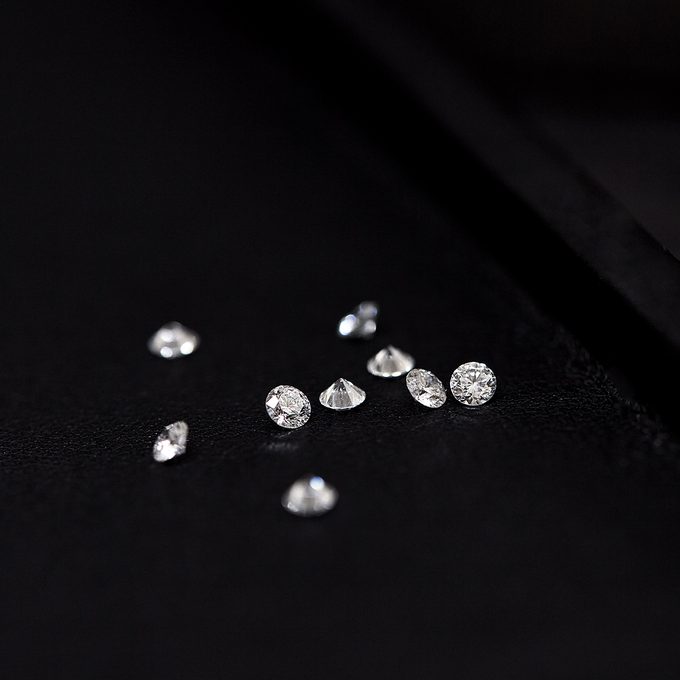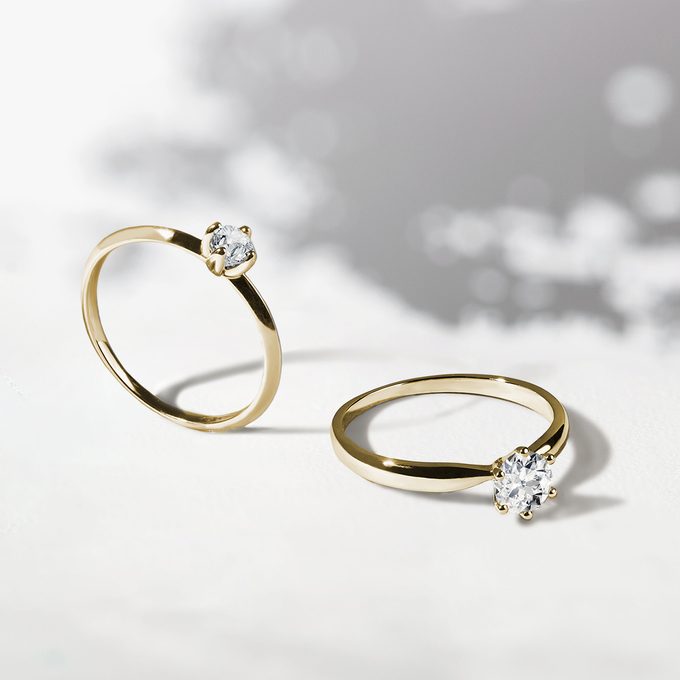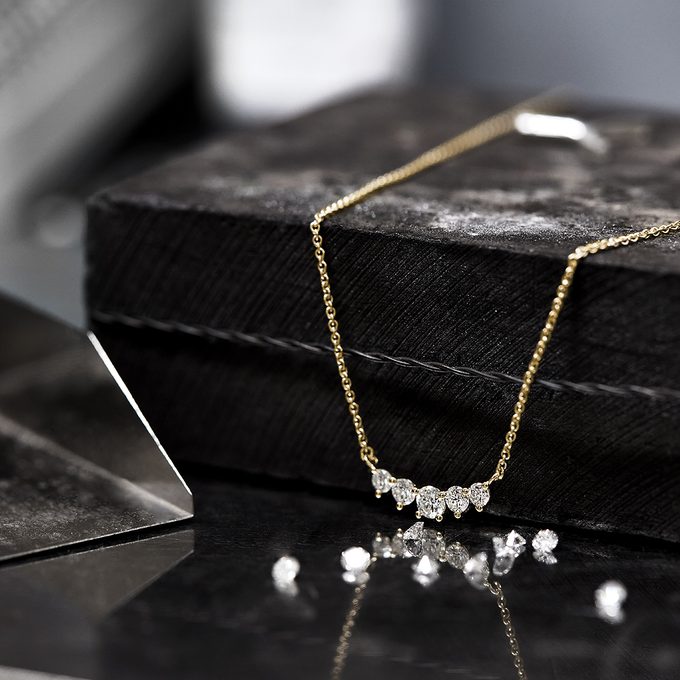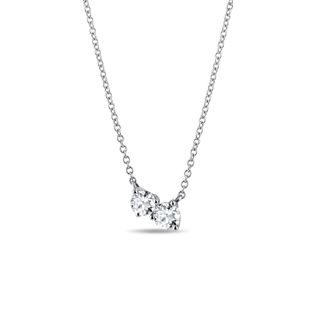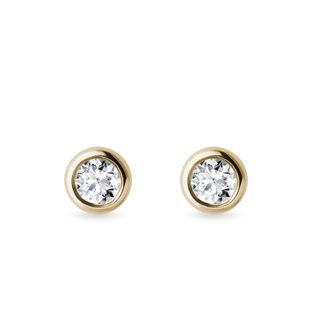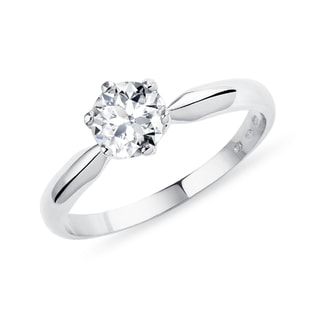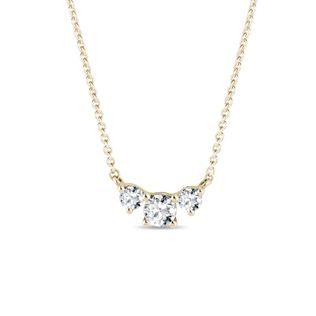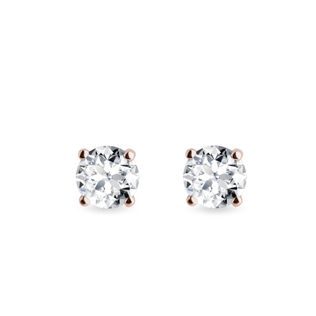When customers are looking around to buy a piece of diamond jewelry, quite often they come across the term “brilliant cut” and many wonder exactly what this cut is. In a nutshell, a brilliant cut is diamond which has been cut into a round shape with a specific number of facets that have been cut in such a manner as to carry and reflect light in the best possible way.
Diamonds can be cut into many wonderful shapes with various numbers of facets – cuts such as the emerald, cushion and princess among others. Gemstone cutting is a master craft in jewelry making, requiring years of experience and absolute precision. We have devoted an article just to this topic on our blog in which you can read all about the process a gemstone must go through to achieve its final shape and sparkle.
The origins of the brilliant cut
The ancestor of the brilliant cut could be considered to be an Italian cut called Peruzzi which was created around the year 1700. It had the same number of facets as a modern brilliant cut but it had a different shape. This cut was then further refined and perfected into the Brazilian, Lisbon and Old Mine cuts. The round varieties of these cuts were also then referred to as the Old European cut (or also the English or Victorian cuts). The brilliant cut has been in existence since around 1910. Its name comes from French and means shining or bright. Around 1917 it was modernized by Marcel Tolkowski who was able to calculate the exact angles that the different parts of the cut should be at in order to achieve the most perfect result in terms of the use of light. This resulted in a rapid reduction in the yield of the raw stone to cut diamond as this modern cut was shallower than its predecessors. It’s no coincidence however that this cut has become the most widely used for diamonds. A brilliant cut really does make the best use of light compared to other cuts but that's only if it's been well cut.
There are two types of brilliant cuts - the ideal and standard. An ideal cut is called ideal because it uses light in the best possible way. Within the ideal cut, there are two other types, namely the American and the European cut but they differ only from each other only in minor ways. An ideal cut is much rarer on the market. It has precise proportions which are quoted as a percentage of the total diameter of the diamond and this is because an ideal cut usually produces more waste when it is being cut, whereas with a standard cut, the aim is to maximize the use of the rough diamond at the expense of brilliance, achieving a higher carat weight and therefore a higher price.
A brilliant cut in detail
The characteristics of a brilliant cut diamond are its round shape and when it is viewed from the side, it can be divided into two parts, namely the top and the bottom.
The imaginary dividing line between them is the girdle, the polished area around the widest part of the stone. It can have various widths, be smooth or cut into flat facets. A piece of the girdle is purposely left unpolished and in its natural state, because this is the only way to determine the origins of the diamond. With synthetic diamonds, a code is laser-etched into the girdle, which helps us to identify the diamond. The part above the girdle is called the crown and the part below it is the pavilion.
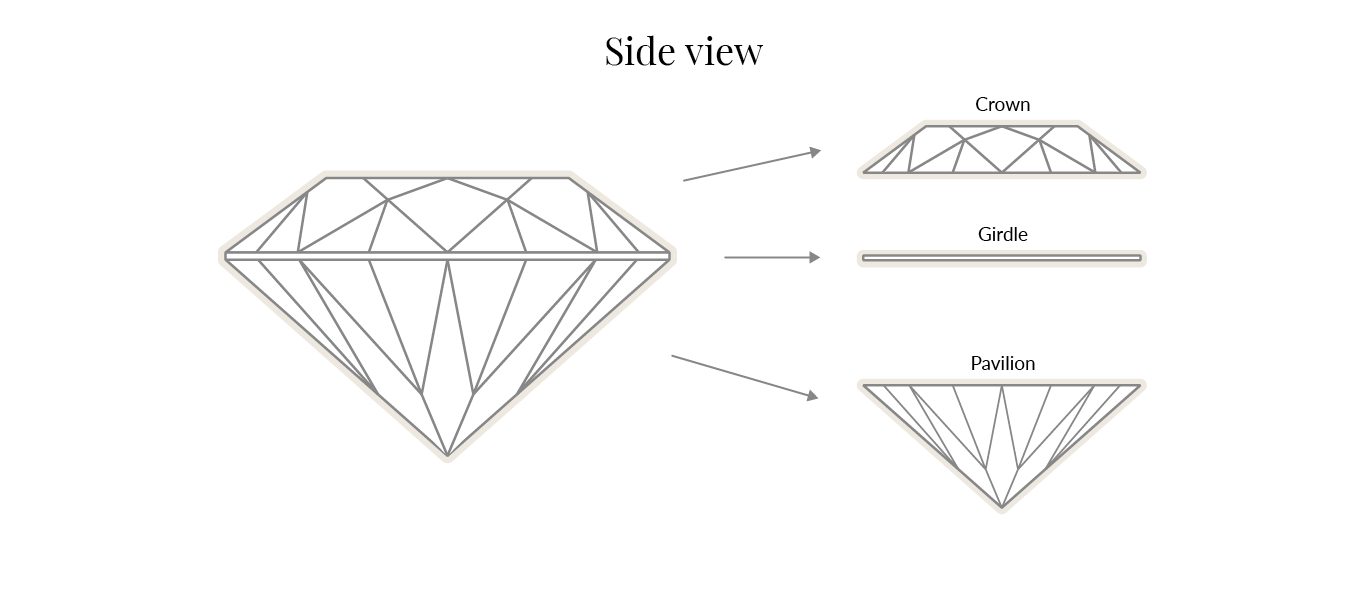
When viewed from above, you will see a large area in the middle of the crown of the stone that is parallel to the girdle and is called the table. It is the largest facet on the whole stone, and it is through it and the surrounding facets that most light enters the stone. If the cut is done correctly, this is also where the light should leave or reflect back from the stone.
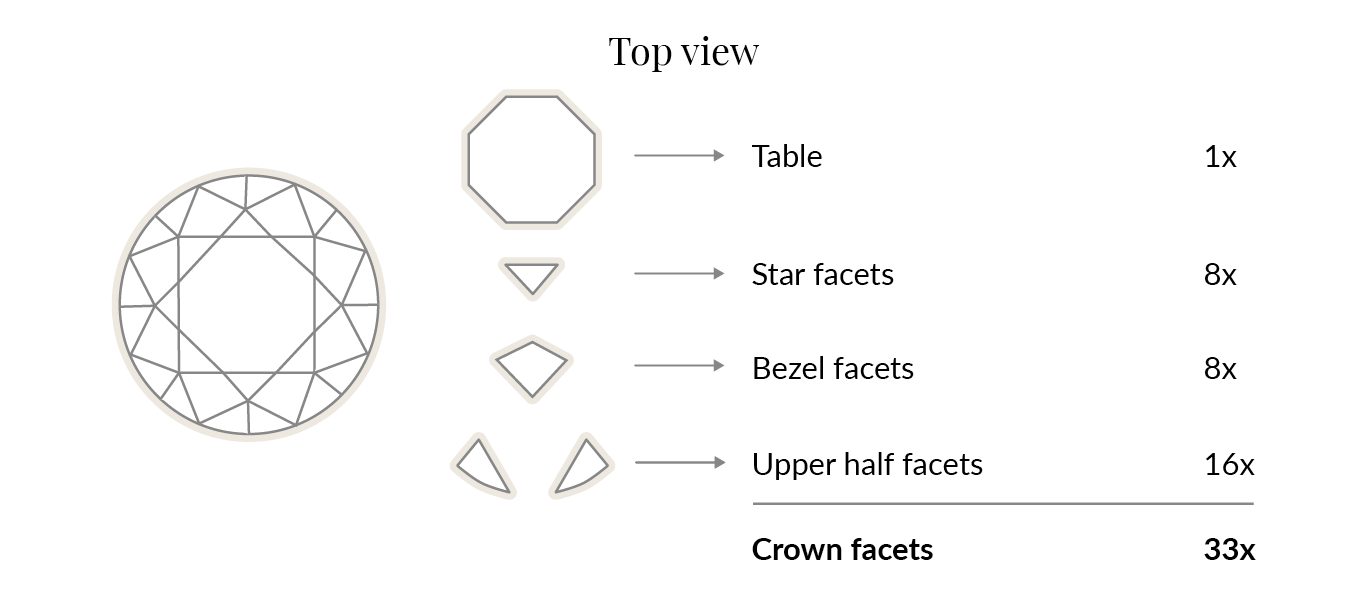
There are facets around the table all the way down to the girdle. These are referred to as star facets (adjacent to the table), upper half facets (adjacent to the girdle) and bezel facets in the middle.
When viewed from below, you can see the flat tip of the stone in the middle. This is a facet parallel to the table, it is called the culet and its main function is to protect. This is because if the pavilion were cut into a point, it might chip off. In some gem cuts the term apex is used instead of culet. This bottom surface area can also have an important optical function, namely that of a mirror.
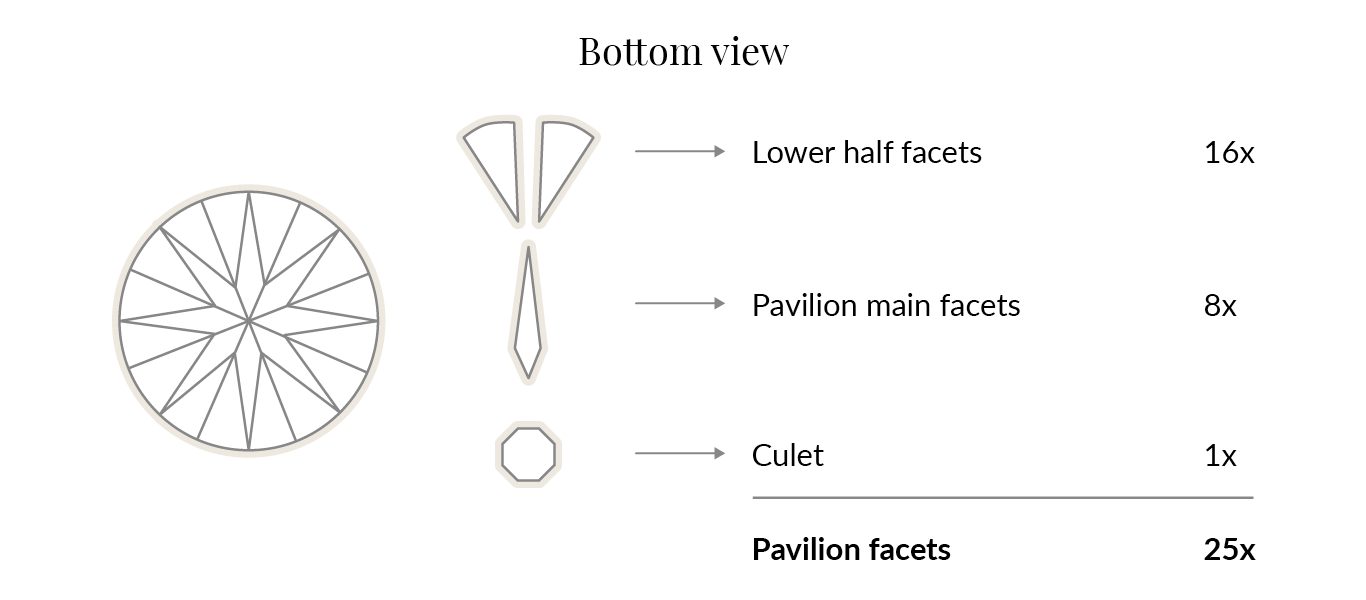
Around the culet are the pavilion main facets. The areas adjacent to the girdle are called the lower girdle facets or the lower half facets. Between them are the facets of the pavilion, which are meant to reflect light back to the crown. All together, a brilliant cut has a total of 57 facets (plus the culet), 33 of which are on the crown and 24 on the pavilion.
How light travels through a brilliant cut diamond
Let’s start the description with the standard brilliant cut which is the most common. The angle of the pavilion to the girdle is crucial for maximum use of light. It should be at 40° to 45°. The angle between the crown and the girdle should be 34°. If you fail to stick to these angles, it will alter the depth of the diamond which is measured from the table to the culet. When there is optimal depth, the light within the stone is reflected in the best possible way and the diamond displays a high brilliance. Light enters the stone mainly through the table and it also exits the stone through there. When viewed from the top, the diamond quite simply shines. If the depth is too big, the light does not reflect back to the table but is reflected inside the pavilion and escapes out through the facets where it spreads out from the sides and negatively affects the sparkle of the diamond. If the brilliant cut has too little depth, the light is reflected out in the pavilion and the diamond’s brilliance quickly reduces.
Brilliant cut diamonds in KLENOTA jewelry
Brilliant cut jewelry is one of the most classic gifts you can give someone or yourself. It is elegant, clean and dazzles with its brilliance and inner fire. Diamonds in a brilliant cut are a great choice, especially when choosing an engagement ring such as a solitaire, where only one central stone plays the starring role in the ring.
KLENOTA jewelry generally uses brilliant cut diamonds with a color grading of G (rare white) and a clarity of SI (slightly included). This means that they may contain very small inclusions which are however not visible to the human eye.
KLENOTA also places an emphasis on the quality of the cut. Our range of brilliant cut diamonds commonly come in the VG cut quality. These reflect almost all the light which hits the diamond and are almost indistinguishable to the naked eye from top quality diamonds. If you would like to set a diamond of even higher quality into your jewelry, just contact us and we will be happy to oblige.

